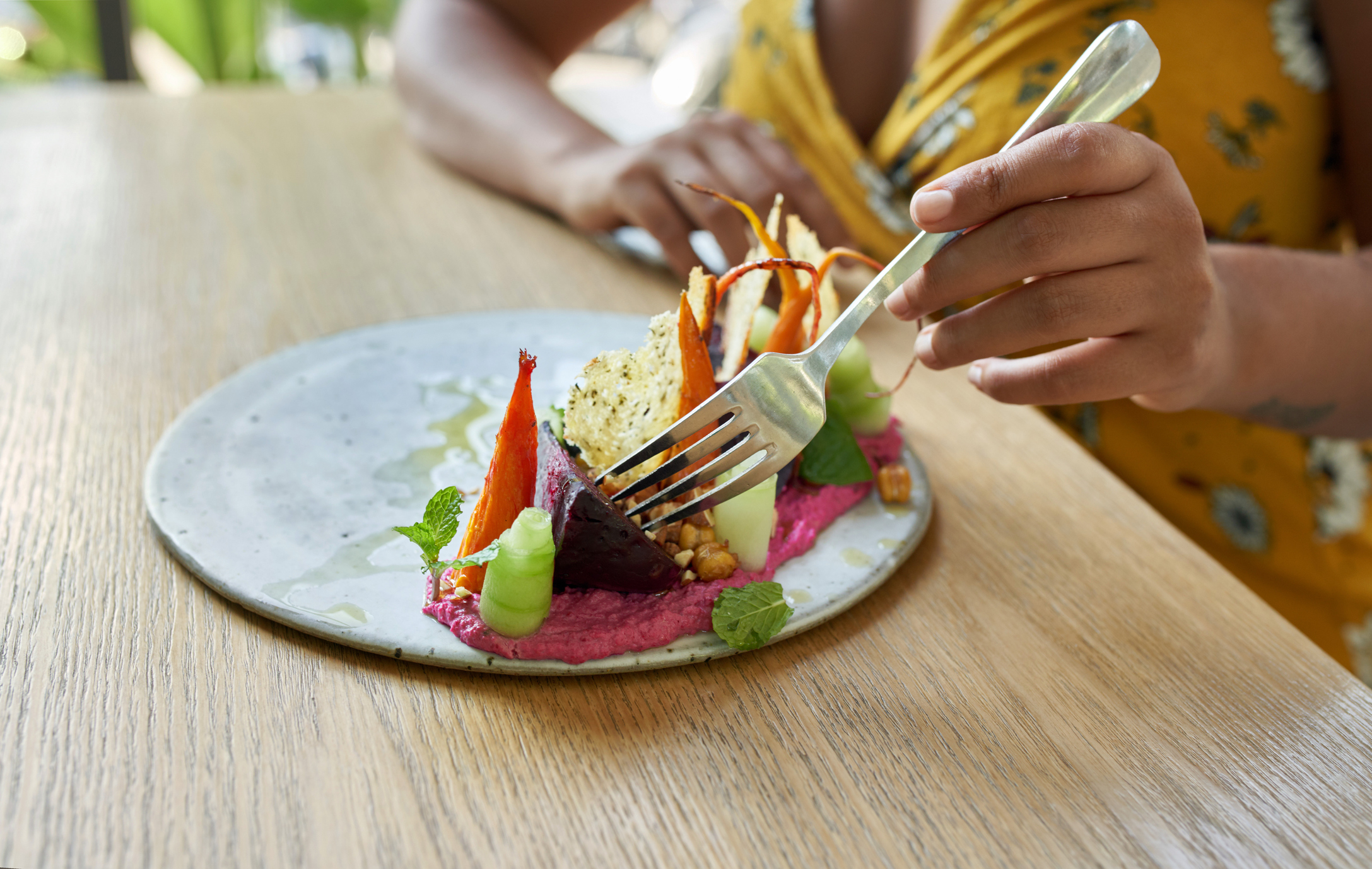
We’ve all heard about it. It seems like everyone on social media is talking about it, but what is intuitive eating, and how is it connected to mindfulness? It isn’t really new, but it seems to have become more popular over the last few years.
The anti-diet approach was first introduced in 1995 by Californian dietitian Evelyn Tribole and nutrition therapist Elyse Resch with the bestselling book Intuitive eating. According to research, intuitive eating has been linked to a decreased emotional eating behavior with higher levels of mindfulness and even a lower BMI. The idea behind the concept is to stop restricting and (re-)learning how to identify your body’s signals of what it really needs to nurture yourself without categorizing food into good and bad.
As a holistic nutritionist, I eat intuitively for many years now and have never felt better.
So let’s get into the details; Only eat when you are hungry, and stop eating when you feel full. Without prohibitions, without renunciation. Easier said than done, right? Mainly because we live within a society that is abundant in easily accessible food. Mindfulness often plays hardly any role in everyday life. We eat out of habit and ignore signals from our bodies. Instead, external signals often dominate our diet: advertisements for the latest ice cream, cooking tutorials, or food photos on Instagram. So although we are well satiated, we often get the feeling of being hungry anyway.
Research has shown, though, that intuitive eating strategies and skills can be re-learned and sustained. The following ten principles of intuitive eating will help you get started, and I would like to break them down for you in a beginner-friendly way;
Reject the diet mentality
Diets are often doomed to failure in advance and are not a long-term solution if you want to reach your feel-good weight. On the contrary, they usually lead to renewed weight gain – even I, a nutritionist, have fallen into that trap in the past.
Honor your hunger
Hunger is not your enemy. It’s your body’s natural defense mechanism and desire to be fed. You’ll often read to suppress your hunger with a big glass of water. Forget that. Eat when you’re hungry – whether the last time you ate was one hour or four hours ago.
Make peace with food
Stop splitting food into good and bad. Everything is allowed. If you eat intuitively, you eat everything you want. Pay attention to the taste and the feeling that the meal leaves after eating.
Challenge the food police
This is a crucial step on your path of becoming an intuitive eater; The “food police” are the thoughts that tell you that you should feel good or bad after eating. Reject these thoughts and stop feeling guilty if you ever ate a bag of potato chips or a chocolate bar.
Discover the satisfaction factor
Eating is not just about getting full. Food should make you satisfied and well-nourished. So sit down, make time and take your meal in peace and with all your senses.
Feel your fullness
Learn to listen to your body’s signals; If you eat slowly and calmly, you’ll quickly know when enough is enough. You haven’t finished your plate yet? That doesn’t matter; just save the rest of the meal for the next day instead of forcing yourself to eat it all.
Cope with your emotions with kindness
When you’re stressed out or sad, you automatically reach for chocolate. Does that sound familiar? I’ve been there too.
It’s perfectly okay to feel sad, anxious, angry, or lonely. Food is often used to make you feel better. But remember, food won’t solve your problems. Find other ways to deal with your feelings. A Yoga session, a phone call with your best friend, or an entry into your gratitude journal can be beneficial.
Respect your body
One of the most important principles of intuitive eating; You are enough. Accept your body the way it is and learn to love yourself. Your value does not depend on the way you look or how much you weigh.
Move
Instead of thinking about which workout burns the most calories, consider, “What activity is fun and makes me feel good?” It doesn’t matter if that’s Yoga, running, dancing, biking, or strength training. If you enjoy your exercise routine, you will be more likely to stick with it.
Honor your health
Choose food that promotes your health and helps you feel good. You don’t have to eat perfectly all the time to be healthy, though. No particular food will make you sick overnight. The journey is the destination.
Remember, intuitive eating is not a diet. Instead, it’s an expedition to more self-love. Applying ten principles can feel overwhelming first, just start with the one that seems most natural to you and add another once your new habit has manifested. You’ll quickly discover that it doesn’t require effort as you learn to simply trust your intuition again.
Something that is close to my heart and I would like to mention is that if you have in the past or are currently struggling with an eating disorder, I know letting go of numbers can feel challenging and scary; I have worked with clients who gained weight when first introduced to intuitive eating, and this can be triggering. Just know that this is a very normal and even healthy response from your body when you restricted yourself for a long time. Still, the chances are high that you will bounce back to your healthy feel-good weight when your body realizes that this is the new standard and it doesn’t need to store for tough times. Additionally, I suggest unfollowing all social media accounts that glorify unrealistic body types and food restrictions.







